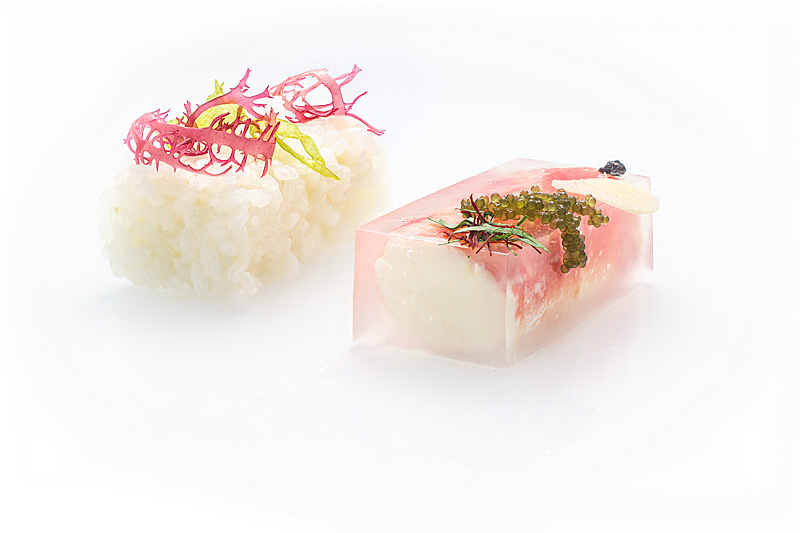
Let’s learn about King Crab.
Fresh Alaskan Red King Crab is a bit of a culinary unicorn. There are two other recipes in this book that call for it, but in both cases I substituted fresh local Dungeness crab. My original google searches for it about 3 years ago turned up very few results that didn’t intersect with Costco; Chowhound is littered with “Q: Where can I find King Crab in X area? A: Costco” posts. Local fish markets in the Bay Area don’t carry it, despite carrying live Dungness crabs, lobster, even live uni or softshell crabs if you’re looking during the right time of year. Something about Costco struck a sour chord with me; I just couldn’t imagine Alinea bangs down to Costco to load up on discount bulk crab to sit in their walk-in next to thousands of dollars’ worth of fresh white truffles or imported Japanese fish.
So I started digging.
1980 apparently represented the peak of the king crab industry; Alaskan fisheries produced ~200 million lbs. of crab that year. The catch suddenly and sharply took a downward turn, however; by 1983, the total size of the the crab population had dropped by 90% for reasons that are not entirely clear. Several theories have been proposed, including overfishing, warmer waters, and increased fish predation. What did not take a downward turn was American demand, and herein always lie problems.

Alaskan King Crab are fished from the their native homeland of the Bering Sea. In the 1960s, Russian scientists seeded these crabs into the (subtly- and confusingly-differently named) Barents Sea, which is shared by Norway. The original intent was to to create a new food supply for Arctic communities. King Crab are an invasive species, however; the transplantation into an ecosystem that did not have a native ability to keep the species in check caused a population explosion. The soaring market prices for the crab in the US dissuaded any potential efforts on behalf of Russia to reduce the population; quite the opposite, in fact. With the downturn of the Red King Crab population in the Bering Sea, US markets encouraged the further overpopulation of the species in the Barents sea and correspondingly poor fishing practices of Russian crab boats using nets to drag the sea bottom (rather than the cages [pots] used by Alaskan fishermen), which damages coral and marine life. The massive influx of Russian Crab into the US forces the price down, making for a tempting purchase at Costco, where one can find “King Crab” at $10/lb.
Monterey Bay acknowledges this strongly-undesirable situation, and dissuades consumers from buying the cheaper Russian crab (which only encourages perpetuation of the problem). The trouble is, most consumers don’t know (and perhaps many don’t care) where the frozen crab hails from, so the problem persists.
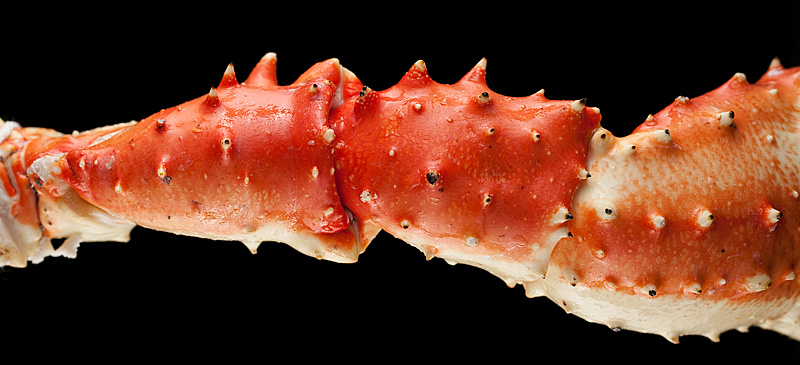
But back to the Alaskan crab. For many years the dwindling population in the Bering sea led to horrendous competition amongst crab fishermen in an already incredibly-dangerous industry. The fatality rate among the King Crab fishermen is about 80 times the fatality rate of the average worker; it is suggested that, on average, one crab fisherman dies weekly during the crabbing seasons. In 2005, to assuage the competition, government regulations on crab fishing changed such that each crab boat was given an allowable yearly quota, and the length of the fishing season was shortened substantially. At one point the season lasted only 4 days; currently the seasons tend to last 2-3 weeks. Once the season ends, the vast bulk of all Alaskan king crab is ‘processed’ (i.e. the crabs are slaughtered, cleaned, cooked, packaged, and flash-frozen), then either stocked in Alaska or shipped to distributors around the world. Most of it goes to restaurants; little of it goes to Costco.
Such a brief season gives natural rise to the questions about how one acquires fresh Alaskan King Crab. Is it possible to buy a live Alaskan King Crab the way one can buy live Dungeness crab or live lobsters here in the Bay Area? Well, yes…if you’re ok with the nearly $350 price tag that’s associated with overnighting a single gigantic 5-8lb crab to your door, and you have the means to kill, clean, and cook it properly. A King Crab’s leg span can easily equal the arm span of an average adult, so cramming a massive, feisty live crab into a stock pot struck me as notably more difficult than doing the same with a Dungeness crab. Is this what Alinea does?
Consulting the recipe for this dish offers a subtle clue: for the King Crab component itself, there are no cooking instructions. The book itself seems to assume that you are working not with live King Crab, but with pre-processed crab. Is this a subtle accommodation afforded to the home chefs who might try this dish? Absolutely nothing else in the book seems ‘dumbed down’ for the home kitchen, so it’s hard for me to believe that this was.
I wrote Alinea a few years ago asking about this. Were they sourcing fresh live crab (and if so, how do they sustain this outside the 2-3 week seasonal window), or were they using pre-processed crab? A chef responded that “frozen crab is ok, as long as you can verify catch, kill, cook, and freeze dates for the crab” to ensure it was processed as promptly as possible after capture.
Hm.
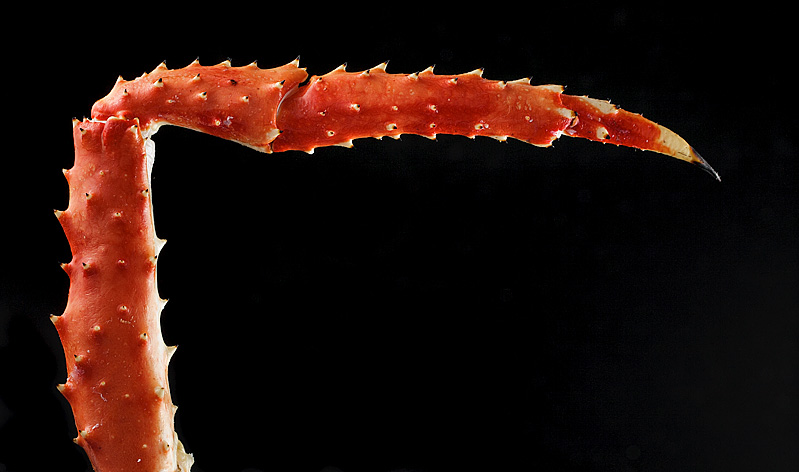
Learning what I had about where the bulk of Costco’s supply is from, and wanting to keep the game here lively and challenging (because, let’s face it, saying “I went and bought this at Costco” isn’t really an interesting story), I started hunting around to see how I could put myself in the path of fresh Alaskan King Crab. Without too much trouble, I unearthed several websites for businesses based in Alaska that serve as the processing/distribution point between the fishing boats and whomever buys the crabs. One of them in particular, The Crab Broker, has an interesting note on their site: during the season itself, they can process and ship you crab without freezing it. This struck me as an interesting compromise between flying in a live crab and buying something that’d been frozen.
I sent an email to The Crab Broker 2 years ago, in October, asking when Red King Crab season was and if they would allow me to buy a small amount. They replied that they would be happy to, but the season had just passed a few weeks before and they were therefore sold out. I could, if I chose, opt to buy some of the flash-frozen crab…but something about nailing the timing of this seemed irresistible to me. Plus at the time I had plenty of other dishes to work on, so I said I’d wait. I set a reminder in my calendar for 50 weeks later to call them back.
When the time arrived last year, I rang them up. The woman with whom I spoke said “Oh no! The season just ended last week!”. I’d missed the opportunity to place an order by a scant few days. Sad face.
This year, I noted with gloomy certainty that our wedding in mid-October would assuredly land right exactly in prime fresh-crabbing season. A part of me wondered if it’d be ok for me to overnight some crab to Kentucky and make a heroic attempt at completing this dish in the midst of trying to cater the wedding itself, but this was one rare instance in which reason prevailed and I accepted that I would likely have to wait until next year to have another chance. By this point the idea of hitting this narrow target had turned into a madness with me.
Then something amazing happened: our shitty government decided to be total assholes and completely shut down! It turns out you need government to do a lot of things: run national parks, deliver mail, and…(wait for it)…: issue fishing licenses. On the phone with Lois at The Crab Broker the Monday after our wedding festivities ended, she noted that normally I would have just missed the season by a few days again, but the government shutdown had delayed the issuance of the requisite crabbing licenses by several weeks. The boats had only just gotten permits a few days before, and were out in Dutch Harbor RIGHT THAT MOMENT. How much crab was I hoping to buy?
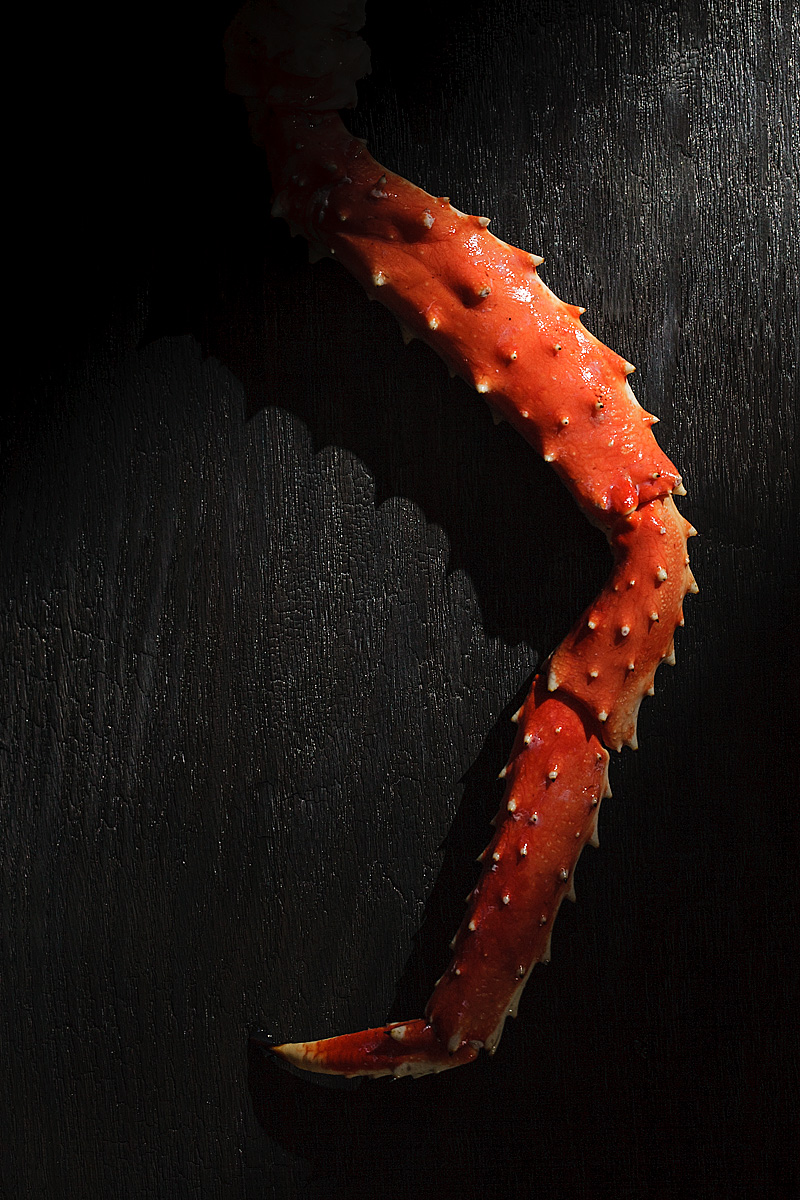
Ecstatic that I had a glimmer of hope pulling this off, I asked Lois how this whole thing worked: what happened between the time I placed an order and the time delicious fresh crab showed up at my doorstep? Lois answered:
Good questions. Let’s say for example’s sake that a customer has ordered a delivery on Wednesday. A boat arrives [at their office in Dutch Harbor] and its load of live crab is unloaded and processed Monday morning. By early Monday afternoon, the crab is taken over to the airport and put on a plane headed to Anchorage. The crab arrives Anchorage Monday evening and is kept in a reefer unit until Tuesday morning when a FedEx airbill is applied to the box, the box is tendered to FedEx, and delivered the next day. Basically, you’re looking at 48-56 hours from the time the crab is unloaded from the boat until it lands at your door.
Crab ordered for Thursday delivery comes off a boat Tuesday morning and crab ordered for Friday delivery comes off a boat Wednesday morning. If we cannot get the crab delivered within that 48-56 hour window, we don’t do it.
I giddily placed an order for 5lbs, then reconsidered and upped the order to 8lbs, thinking this might be a good excuse to invite friends over to share. I scheduled my shipment to arrive on a Friday, seeking to minimize the amount of time I had to hold this precious, precious ingredient.
I reasoned if I was going this deep for this ingredient for this dish, I wanted to go equally-deep for everything else. This dish is garnished with two other non-trivial components that have eluded me for years: Tosaka and Sea Grapes, both Japanese seaweeds. I’ve been on the phone off and on with Tokyo Fish Market in Berkeley for years trying to get them to import Tosaka for me. The seaweed comes in three colors and ships frozen, packaged in salt. They could only ever seem to get one or two colors at most for me in large 2kg packages, and demanded I would need to buy all of it if they ordered it (which, depending on whom I talked to, ranged from “very easy to order” to “really nearly impossible to get”) for the low low price of around $60 for the package. After another frustrating phone call with them following my order of the crab, a thought occurred to me: I wonder if my friend Carl over at True World Foods (provider of my precious Ayu several months back) could source these ingredients for me?
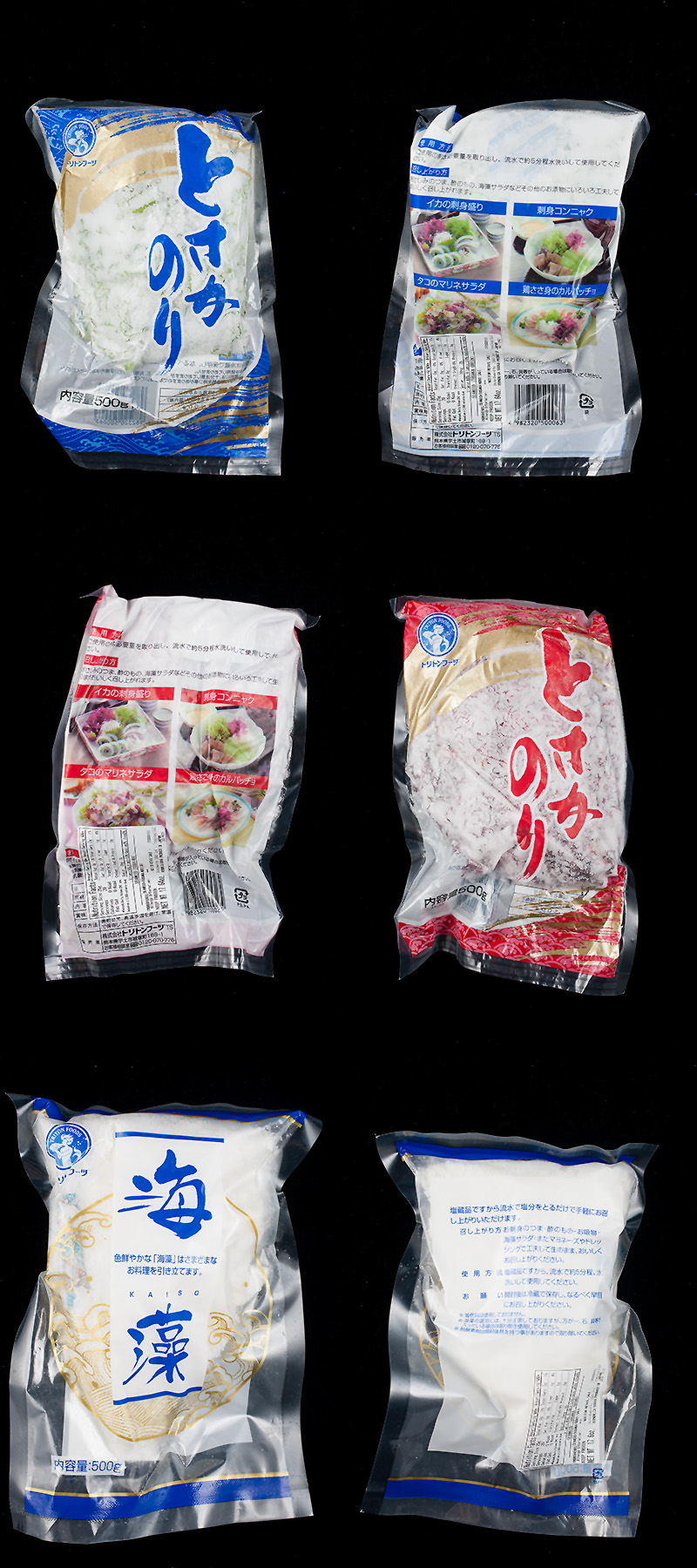
“Oh sure, we keep all three colors of Tosaka in stock all the time. The Sea Grapes we can have flown in, they’ll be here next week” Carl emailed. I love Carl. The Tosaka came in ~1lb packages, and Carl charged me around $10 per package. The Sea Grapes came in a 1kg bag for $60. I placed an order to arrive the following week, and on an early Tuesday morning drove down to True World’s eerily-located warehouse to pick up my three Tosakas and fresh Japanese Sea Grapes.
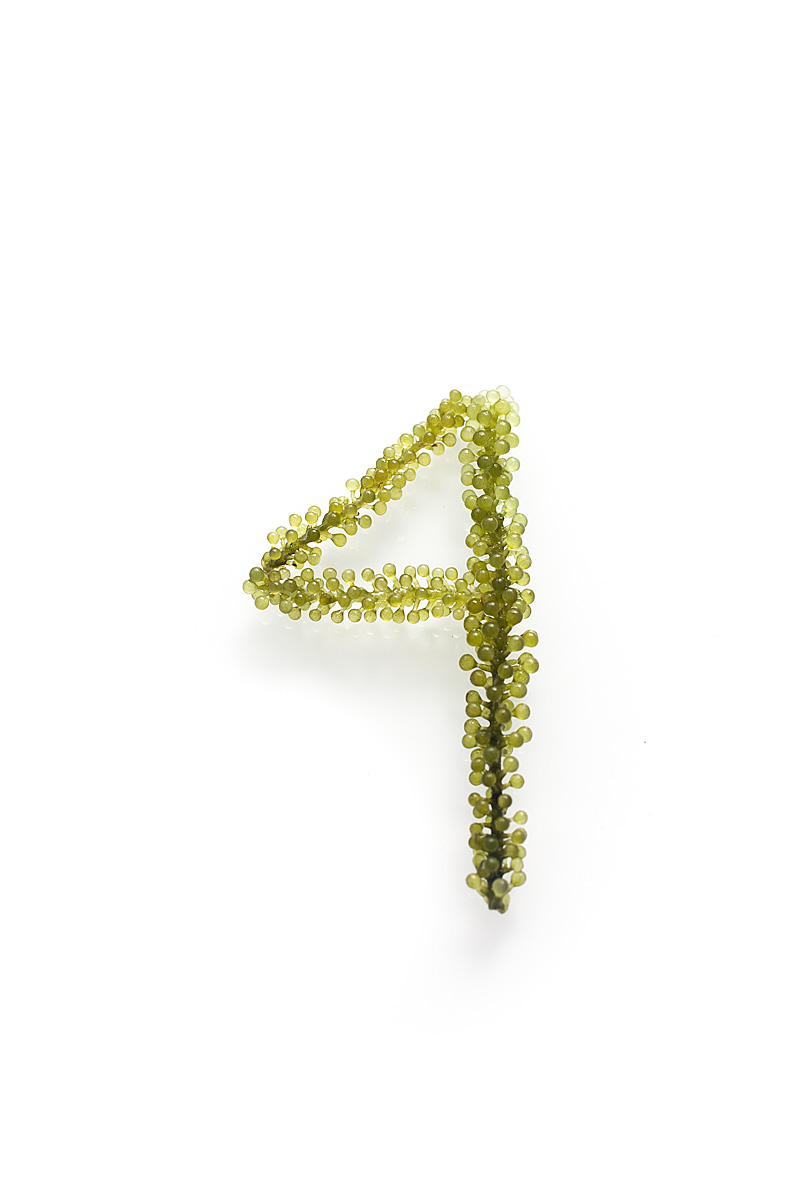
Trying to research Sea Grapes is difficult; there’s not a ton of English-written resources that explain much about them other than “Hey look at this funky thing I had in a Japanese restaurant once”. From what I had gathered before getting into this dish, they seem to be delicate and temperamental, and apparently don’t remain viable for long. Carl noted their grapes came in refrigerated and would stay usable for around 7-10 days if kept chilled; this advice conflicts with other accounts I’ve found about storing sea grapes at room temperature (at which they stay viable anywhere from 5-20 days, depending on the source you’re reading). Not really knowing which source to trust, and because they’d already been chilled when I picked them up from True World, I felt storing them in the back of my fridge was probably the best move until I worked with them and the crab on Saturday.
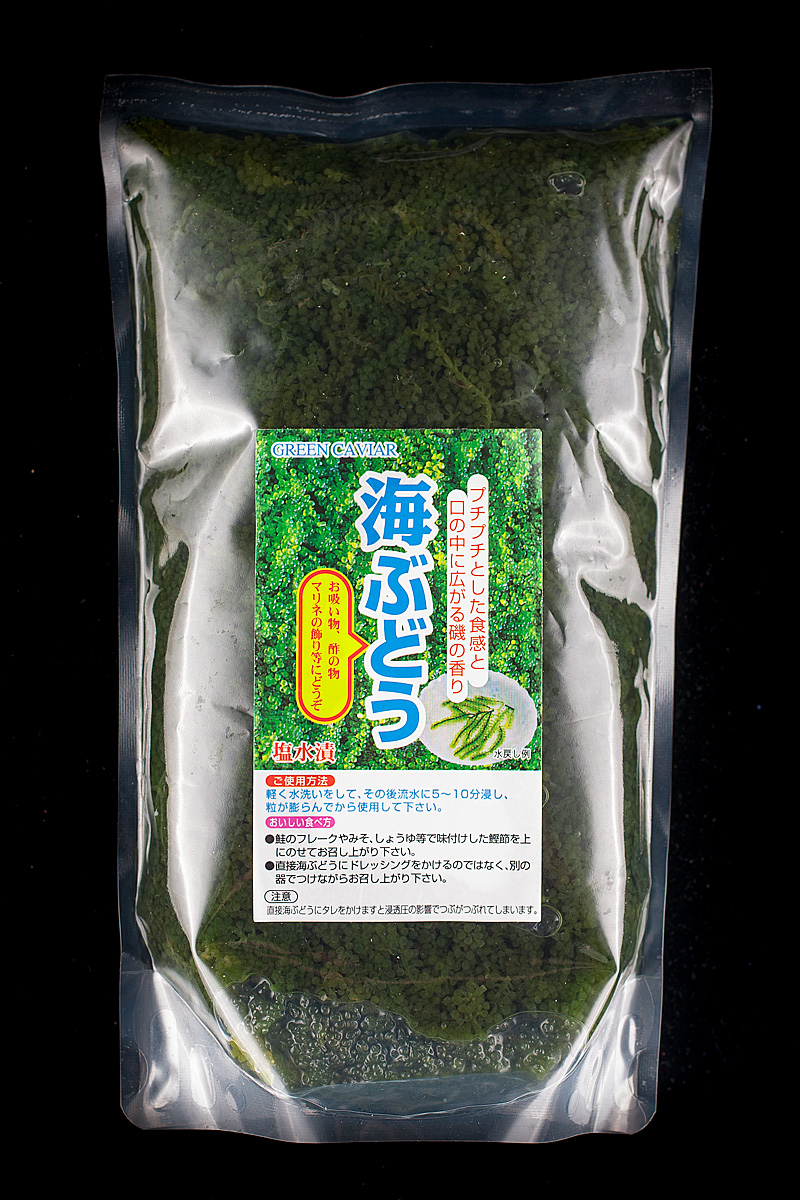
It’s probably obvious how emotional and onerous lining up these dominoes has been for me, and so it was with great relief and excitement that I woke up on Friday morning and filled my biggest camping cooler with ice in preparation to receive my 8lbs of fresh crab midday. I moved my Tosaka packages from the freezer to the fridge for them to thaw while I was away for the day, drove into work, and checked my email over my morning cup of coffee…to find an email from Lois telling me there was a problem with my order: a mistake had been made and they hadn’t shipped it.
She was profusely apologetic, but alas there was nothing that could be done. No crab would show up that day…I’d need to wait a few more days for more crab to come in, and she could have it shipped to me the following week.
Under normal circumstances this would have been an annoying but manageable setback. For me, though, this meant I had one more try to get this before the season ended and my chance would be gone for another year. It also meant that the precious Tosaka and Sea Grapes, specially-imported for me, would presumably go bad in the time that would pass before getting more crab. I would need to re-order the grapes, and likely the tosaka, as re-freezing them after thawing them likely wouldn’t do me any awesome favors.
This made me — and I honestly cannot think of any other way to describe this — crabby.
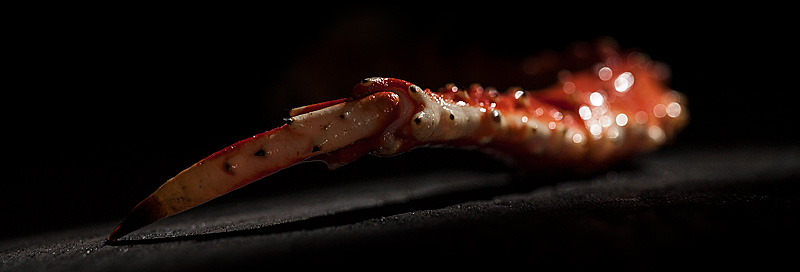
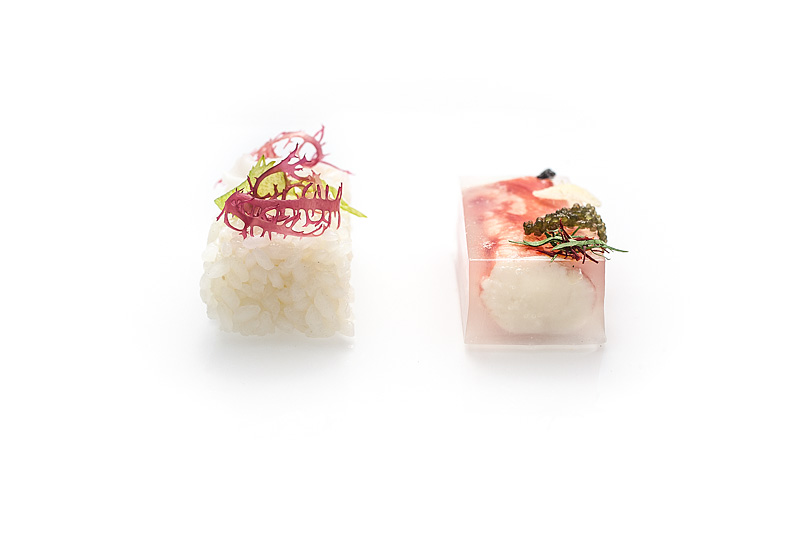
I asked Lois if I could schedule for the following Friday, then immediately emailed Carl to ask what the chances were of me importing another bag of Sea Grapes by next week. He responded that he’d look into it, but that it would take him a few days. With nothing to do but wait over the weekend, I tried again to research Sea Grapes, assisted by the fact that I now had a bag of it and could try searching for phrases or characters on the bag.
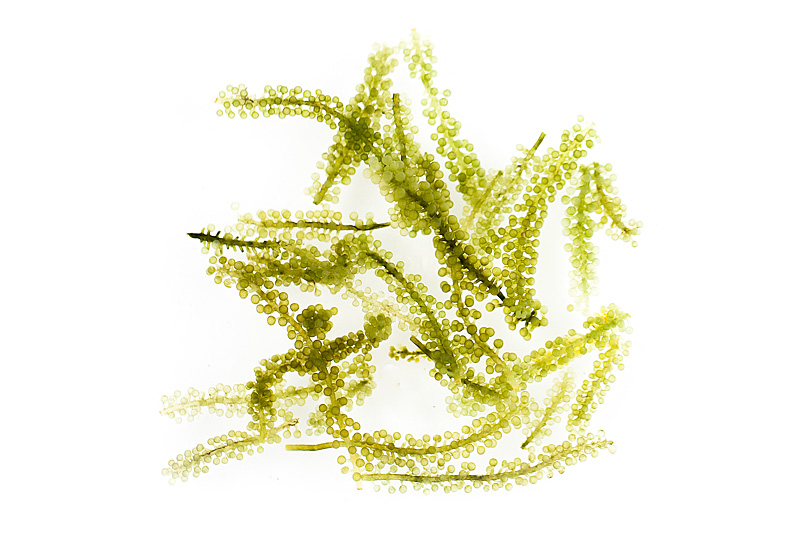
I again found conflicting reports about how to package and store the seaweed, the most critical bit being about refrigeration. After a fair more bit of digging, I think I figured out why. Sea Grapes grow and are harvested around Okinawa in Japan. Okinawa shares a similar latitudinal position as Hawaii. I looked up average water temperatures of Okinawa on several surfing guide websites; the temperature tends to stay between 68F and 86F year around, which is notably warmer than that of most refrigerators obviously. Chilling seaweed that thrives in such balmy climes causes it to wilt. The main appeal of the seaweed is the unique texture it presents; it’s nicknamed “Green Caviar” because the tiny seawater-filled ‘leaves’ pop in the mouth with a texture like Tobiko. Wilted Sea Grapes eventually lose their ‘snap’, turning tough and chewy…notably less magical/pleasant to eat.
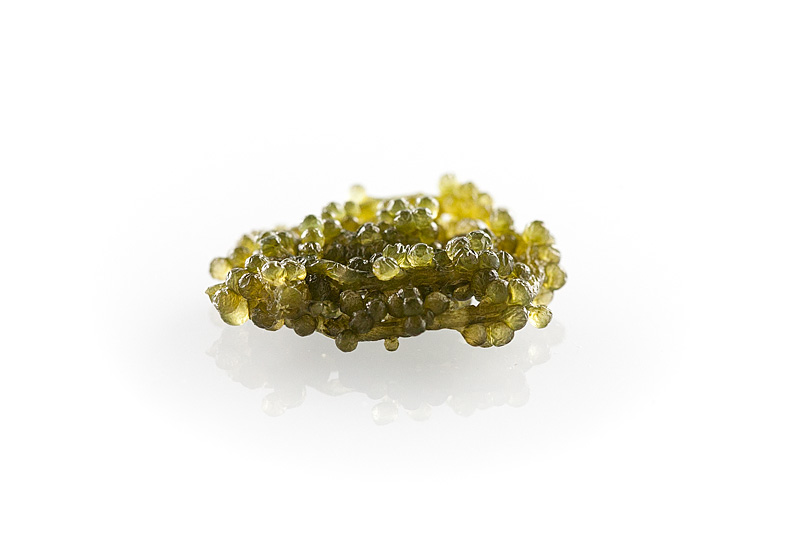
Incredibly, while searching around for this and waiting to hear back from Carl, I stumbled across another site in the US selling the stuff: the Rare Tea Cellar (of all places). It’s way more expensive and you get way less, but they specifically point out the refrigeration factor, and also seem to refrain from overpacking the seaweed (compared to the relatively crowded bag I got from True World). Desperate to ensure I had something fresh for this dish, and also really, really curious at this point, I ordered a bag from Rare Tea. An hour later, I got an email from Carl: “your bag of Sea Grapes will be here tomorrow for you to pick up”. Famine to feast with these things.
The next week I felt a little like an air traffic controller, lining up all these shipments to hit at the same time at peak freshness. I drove back down to True World to pick up more Tosaka and the second bag of Sea Grapes, and the Rare Tea grapes showed up that afternoon. The True World ones had again already been refrigerated, and the Rare Tea ones were at room temp, so I kept them both like that until the next day…when I got a large styrofoam package from Alaska smelling delightfully of sea.
Finally, it was go time.
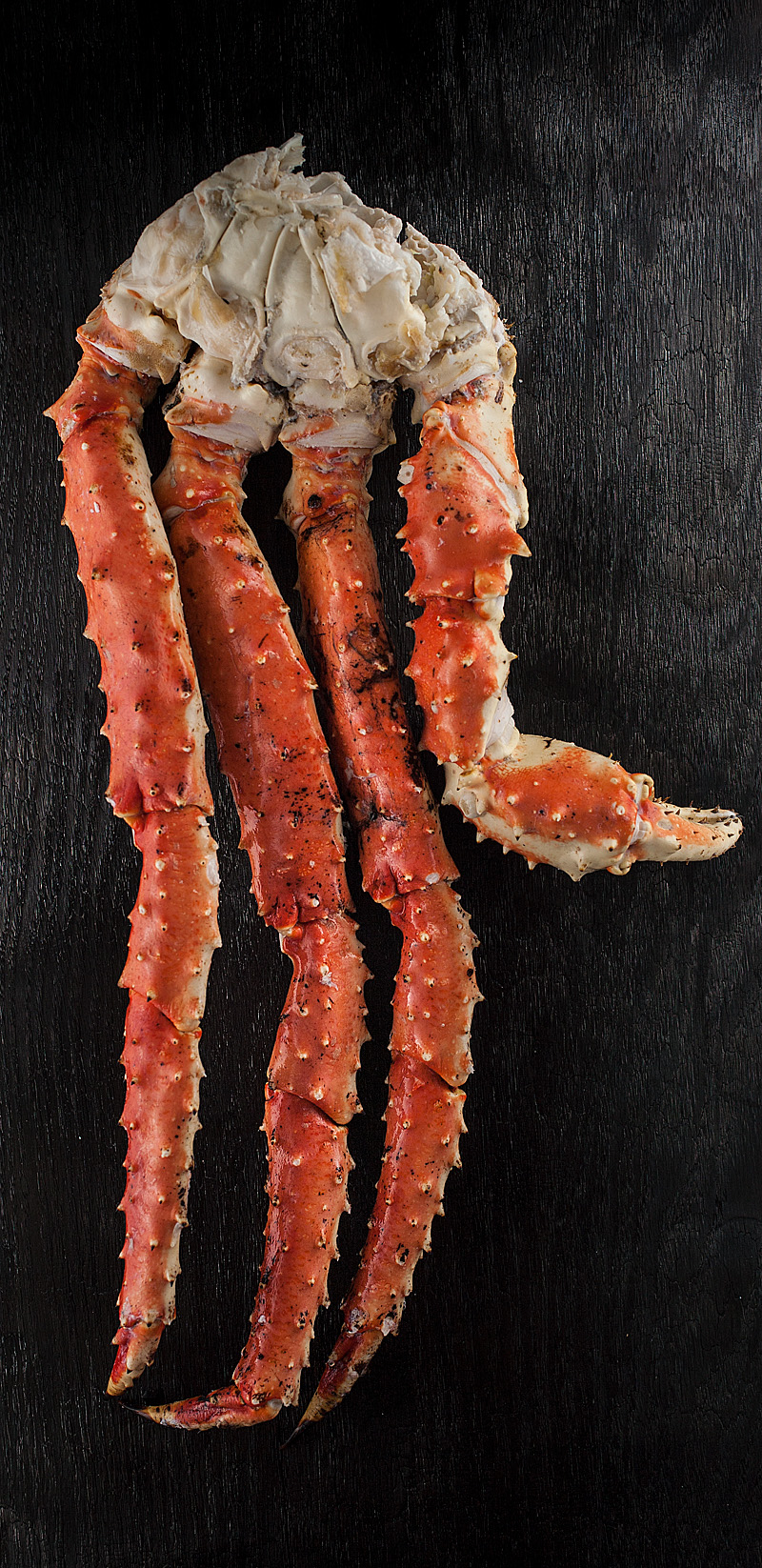
The fresh crab in this dish is served encased in vinegar gel. This gel is made with white vinegar, sugar, water, and salt, then set with gelatin and agar. While it sounds super-duper odd, the gel is only lightly acidic and balanced by the sugar; it’s basically “seasoned sushi rice vinegar”, but presented the way one might make an aspic (the block of gel is warm at service). I first made the gel mixture, and poured a very thin layer of it into a large baking dish. I let this set for an hour, and worked on de-meating some of the crab legs.
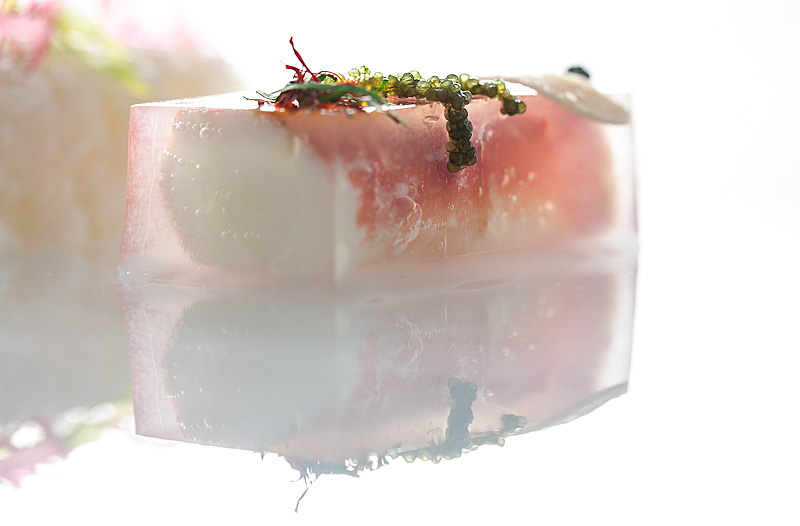
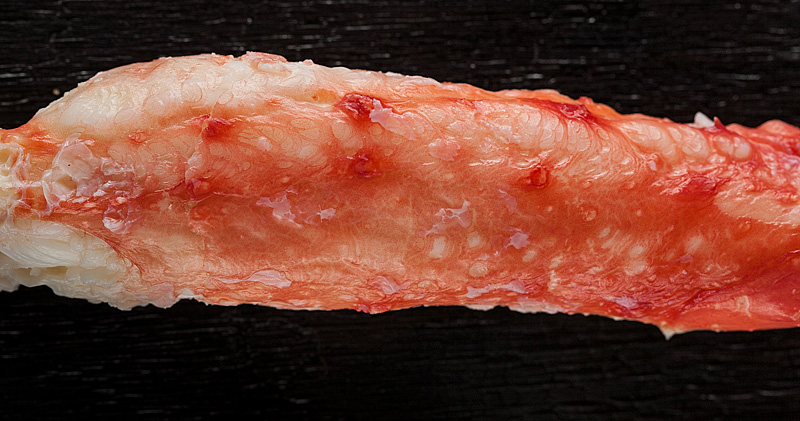
The crab legs themselves were massive; a single one was about the length of my torso. It’s hard to capture the scale of these things without laying down on the floor next to one of the clusters. A small part of me, prior to getting the shipment, had felt a little sad at not going all the way in and buying a live crab to try to cook myself. That part of me was readily silenced when I saw the size of a cooked cluster…no fucking way would I want a live one of these running around my apartment.
There was another small part of me that was worried about the idea of flying in freshly-cooked crab meat in a chilled styrofoam container; I worried it might somehow not be all the way awesome. This fear was also quashed when I ate the first chunk of meat I removed straight from the shell of one leg; it was amazing. Sweet and tender and intensely ‘crabby’, much moreso than the Dungeness that I always love around here. It was delicately salty but not overtly so, tasting nicely of the sea and of itself.
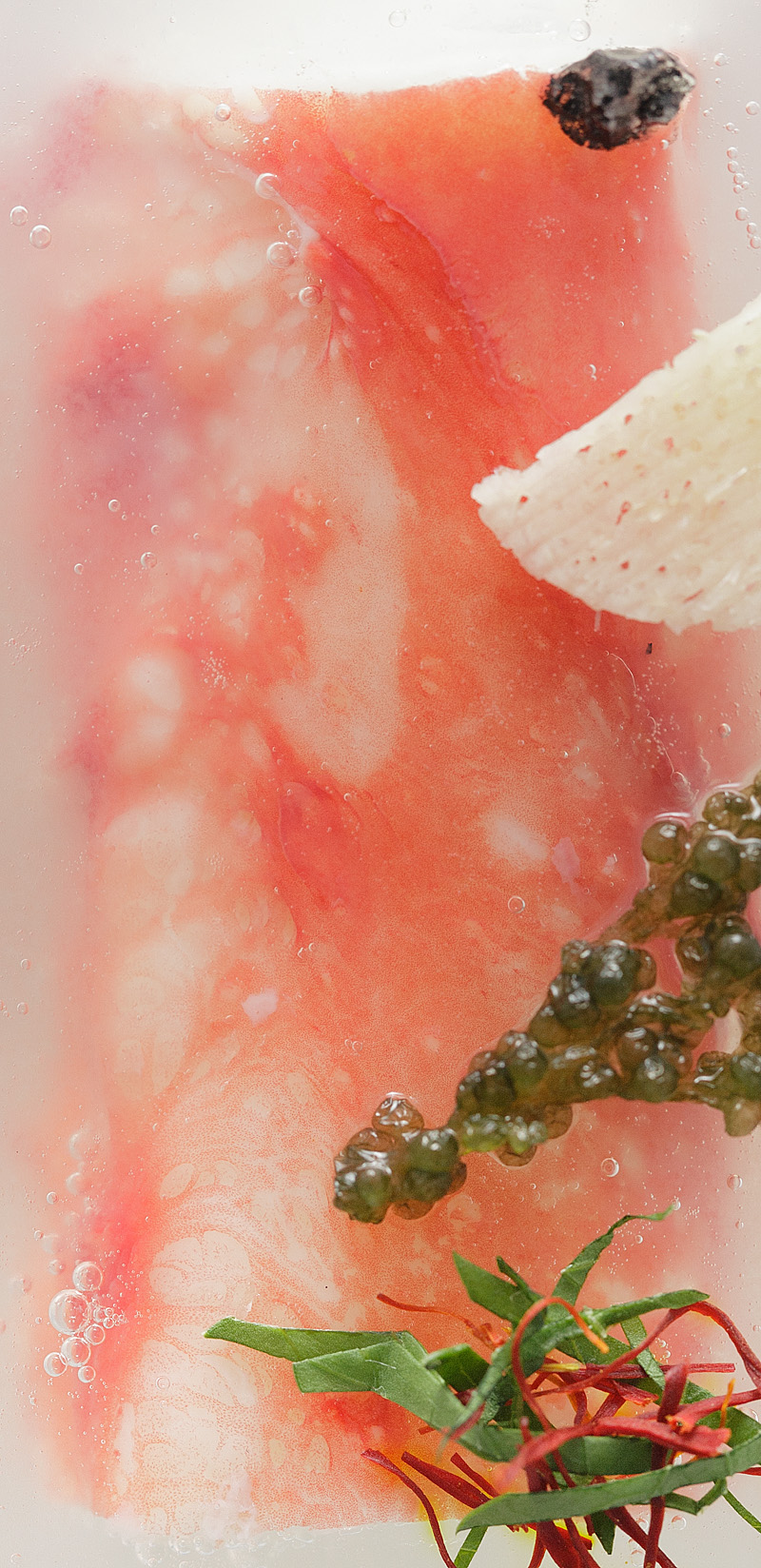
After removing meat from 4 legs, I cut them into 2″ pieces, arranged them on the set layer of vinegar gel, then poured more gel around them to fill the pan up just to the tops of the crab meat. Normally the Alinea book has me gently whisk agar into solution when making a gel with it…this yields a crystal-clear gel. For this dish, it specifically instructs me to aerate the mixture with an immersion blender until it’s cloudy with microbubbles. The gel sets faster than these bubbles can escape, creating a frosted block that traps larger bubbles. It’s a bit magical; the block looks like frozen ice water, but is warm at the point a diner eats it.
While the gel was setting, I cooked some sushi rice, then started playing with my various seaweeds. I thawed the Tosaka by just dumping each frozen salt block of seaweed into a big bowl of water. The brick would disintegrate and season the water. The Tosaka tastes more or less seaweedy, but its real appeal is its color and the beautiful, arresting intricacy of its leaves.
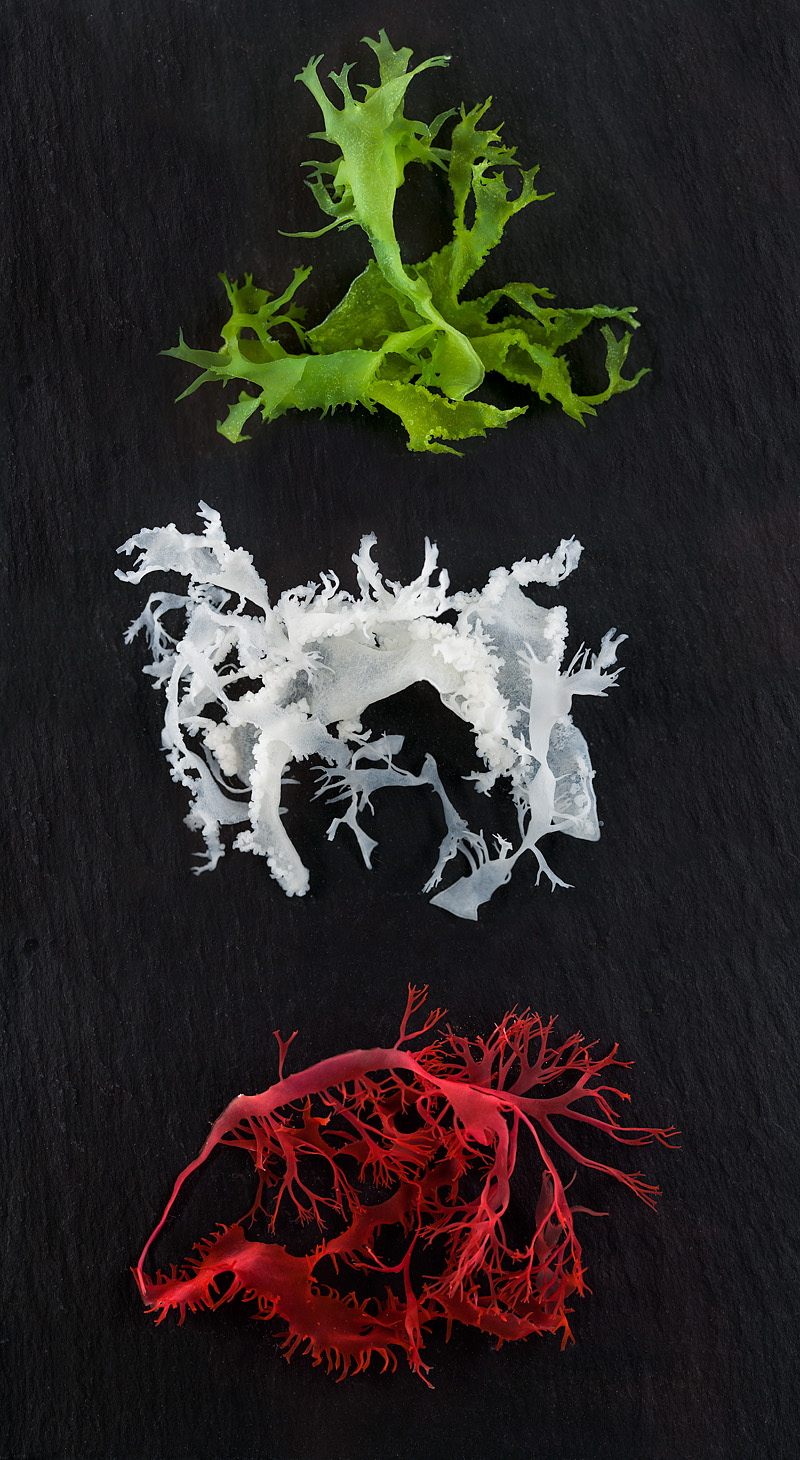
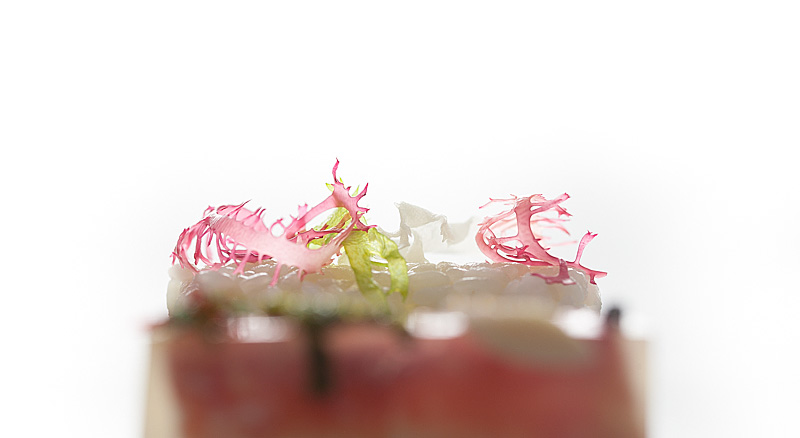
Tosaka thawing, I moved on to working with the Sea Grapes.
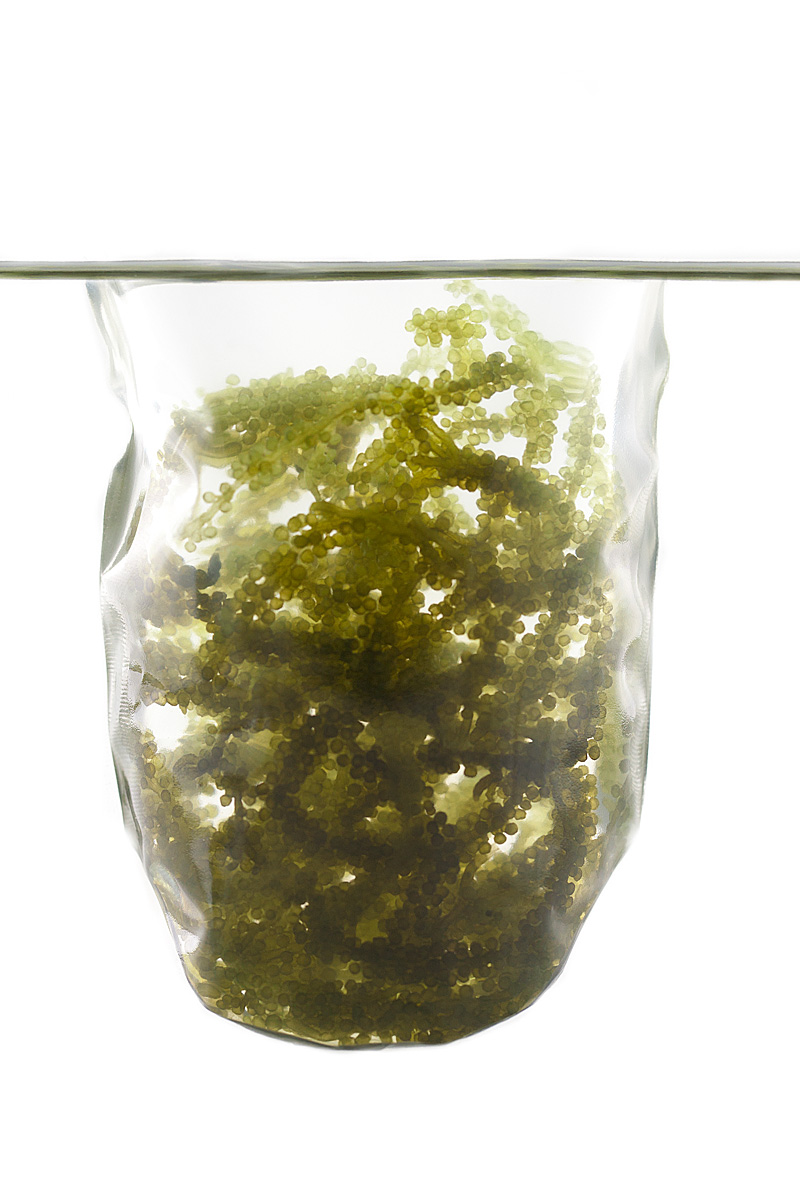
Having three bags, I wanted to see how the different ages and storage temperatures compared. On the left of the photo below are the refrigerated Sea Grapes from True World, and on the right are the nonrefrigerated ones from Rare Tea Cellar. The True World ones were intensely salty and ‘stringy’, and lacked a bit of the caviar-like texture I was hoping for. The Rare Tea ones, by comparison, had more pop, and — while still salty — were less intense and more balanced. They also weren’t stringy. On an odd whim, I tried rinsing some of the True World grapes in fresh water in an attempt to mellow out the brininess of it. I noticed something odd happening; the seaweed started moving! I dropped in a few more strands, and again (after a moment’s pause) the seaweed shifted around in stuttered, abrupt movements.
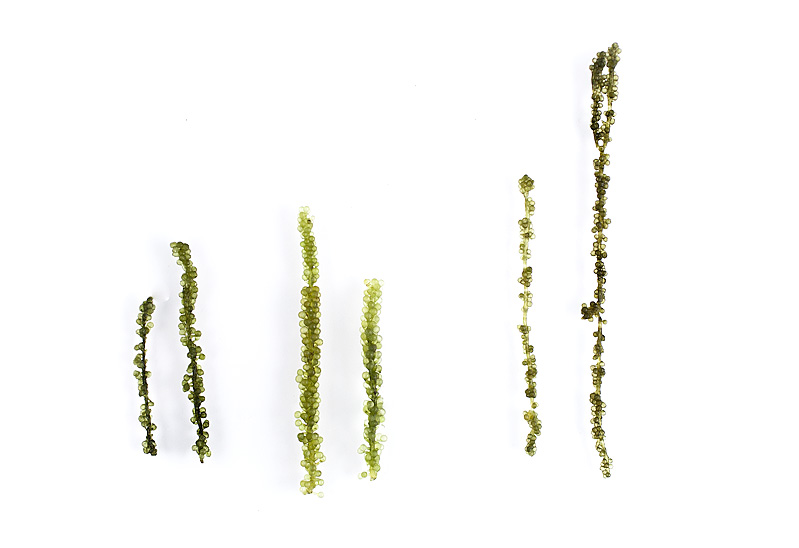
It eventually hit me what was happening: the wilted sea grapes had wept water, which concentrated their salt content. Dropping them into fresh water caused an osmotic effect: less-saline water rushed into the seaweed’s pods, puffing them and causing the jerky movements. If osmosis seems like a subtle and unnoticeable concept, check it:
The rightmost containers in the wide shots of the above video hold Sea Grapes from True World in the brine they arrived in (which is very salty). We can see them remaining limp and withered in comparison to the rapidly-blooming samples dropped in fresh water.
The center grapes in the photo above, then, are ‘puffed’ ones from a bath in fresh water. The caviar-like texture of these was the best of the trio, though the overall flavor was greatly-diminished. It occurred to me that this might be a neat way to season them, but the gotcha is that the salinity of whatever one wants to season the grapes with must be less than that of the grapes themselves; an inexact science given that I didn’t know how long they’d been refrigerated and how concentrated their own internal salinity was. Ultimately after killing half a day futzing with it, I was left thinking the idea has merit and that it’s handy to know that the grapes can be refreshed in this way, but this is still a poor substitute for what Rare Tea did, which was storing them correctly in the first place. Refreshing in a freshwater bath is effectively the same as trying to re-hydrate something that’s been dehydrated; it’s never really an equal to its former self.
Here’s some closeup views of the original True World wilted Sea Grapes:

vs. the Rare Tea sea grapes:

vs. the freshwater-soaked True World grapes:

We can see the Rare Tea grapes have suffered some wilting (I have no idea how long it’d been since they’d been harvested), but not nearly as much as the True World ones, and the stem of the weed from Rare Tea is in much better shape (not to mention the lengths of the strands hint at better handling). The Rare Tea ones offer great texture as well as a good, balanced briny, seaweedy flavor.
At any rate, finishing the dish itself was very straighforward: I cut the gelled crab into portions, warmed them through gently, then garnished with a slice of ginger, a strand of sea grapes, saffron and parsley threads, and a grain of black lava salt. This is paired with seasoned rice that’s topped with the Tosakas, which have been tossed in oil and rice vinegar.
I loved the overall flavors here; each bite into the gelled crab was different, and I was particularly-surprised by the saffron-parsley combination. The warm vinegar was mild and perfectly-seasoned the sweet King Crab meat inside. And, once I’d shared the dish with some friends, we stuffed our faces with the remaining crab, dipped in garlic butter. It was awesome.
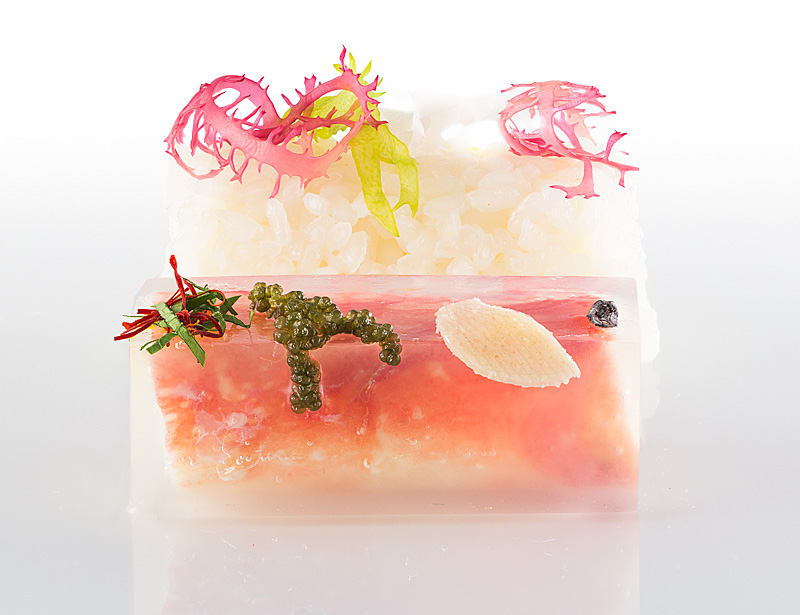
Awesome! I was just trying to source king crab for Lazy Bear last week, and ended up just giving up based on price. I wasn’t sure what kind of yield I would get. So, you ordered 8 pounds. What was the weight on arrival, and did you happen to weigh the total yield after removing the meat from the shells?
I absolutely loved the sea grape osmosis videos. Thank you for sharing!
Thumbs up. Those are some gorgeous-looking legs. Glad you got your hands on some this year!